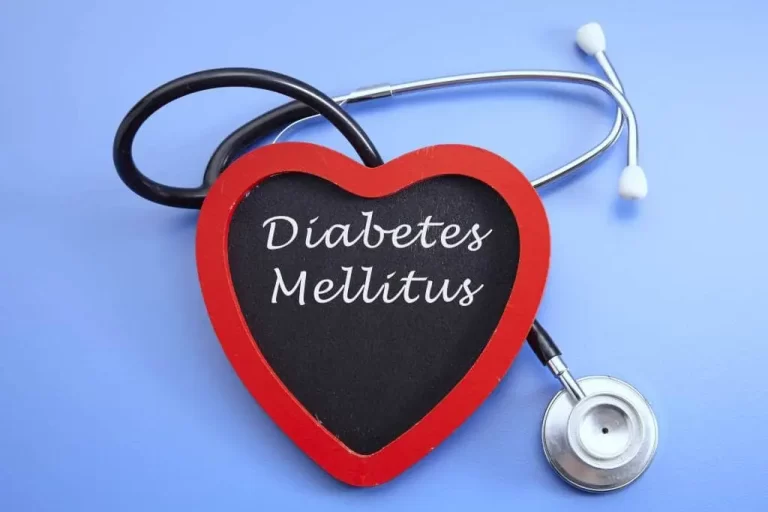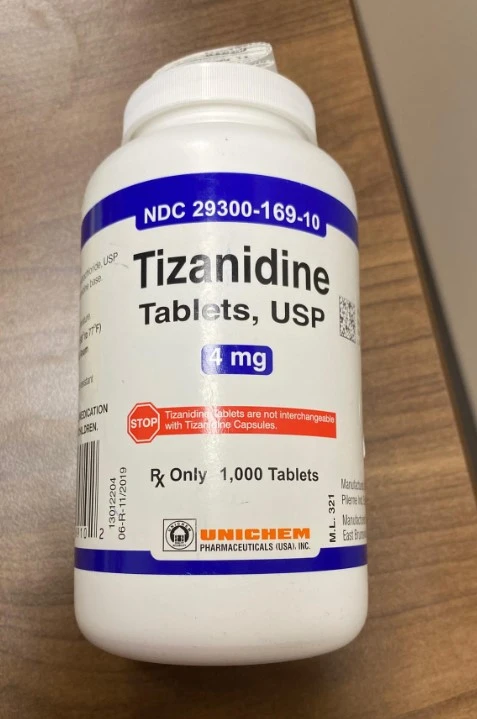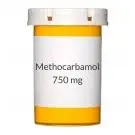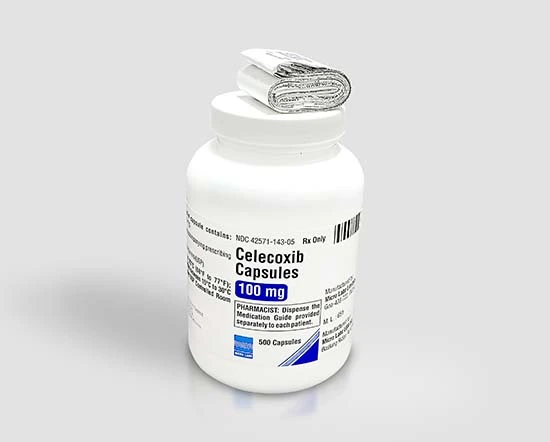Hydroxyzine
Introduction
Hydroxyzine is an antihistamine drug that is marketed under several trade names, including Vistaril and Atarax. It is used to alleviate nausea, especially motion sickness nausea, itching, sleeplessness, and anxiety.
It can be ingested or administered intramuscularly. Typical adverse effects include dry mouth, headaches, and drowsiness. QT prolongation is one of the worst adverse effects that might occur. It’s uncertain if using it while pregnant or nursing is safe.
Hydroxyzine functions by preventing histamine’s effects. It belongs to the piperazine family of compounds and is a first-generation antihistamine. In 1956, Union Chimique Belge produced the product for the first time, and Pfizer later authorized its marketing in the US.
With almost 11 million prescriptions written for it in 2021, it was the 58th most often prescribed drug in the US.
Medical Uses
Hydroxyzine is used to treat motion sickness-related nausea, anxiety, and itching.
According to a comprehensive study, hydroxyzine works better than a placebo to treat generalized anxiety disorder.
Not enough information was provided to compare the medication with buspirone and benzodiazepines. Atopic or contact dermatoses, histamine-mediated pruritus, and chronic urticaria are among the allergic disorders that hydroxyzine can be used to treat.
These have also been shown in previous and current research to have no negative effects on the blood, liver, neurological system, or urinary tract.
When used as a sedative for premedication, hydroxyzine has no impact on tropane alkaloids like atropine. However, during general anesthesia, it may potentiate meperidine and barbiturates; thus.
The dosage for pre-anesthetic adjunctive therapy should be adjusted based on the patient’s condition. In addition to being utilized as a non-barbiturate tranquilizer.
Hydroxyzine is also used to treat neurological conditions including psychoneurosis and various anxiety or tension states. The range of dosages for hydroxyzine hydrochloride used to induce sleep is 25–100 mg.
Since resistance to hydroxyzine’s CNS effects can develop in as little as a few days, it is often only given for short-term or “as-needed” usage, similar to other antihistamine sleep aids.
A significant network meta-analysis and systematic review of drugs used to treat insomnia was published in 2022, although the results of this study did not support the use of hydroxyzine in treating insomnia.
According to a meta-analysis published in 2023, hydroxyzine is useful for promoting sleep onset but less successful at keeping people asleep for eight hours.
Gabasync
Though it has also been touted as a successful treatment for alcohol or cocaine dependency, gabasync is an ineffectual methamphetamine addiction treatment that combines hydroxyzine with two other drugs (gabapentin and flumazenil) plus counseling.
Marketed under the name PROMETA. The FDA had authorized each medication individually, but not when it came to its off-label usage in treating addiction.
Hythiam, Inc., the firm that sold gabasync, is controlled by Terren Peizer, a former bond salesman who has subsequently been charged with securities fraud in connection with another business.
Hythiam licenses its usage for up to $15,000 per patient, of which half is paid to Hythiam and the prescribing physician.
The findings of a double-blind, placebo-controlled trial conducted at UCLA and funded by Hythiam were released in the peer-reviewed journal Addiction in November 2011. It came to the following conclusion.
In terms of lowering methamphetamine use, keeping patients in treatment, or lowering cravings, the PROMETA protocol—which consists of flumazenil, gabapentin, and hydroxyzine—appears to be no more successful than a placebo.
Contraindications
It is not recommended to administer hydroxyzine subcutaneously, intraarticularly, or subcutaneously. Fetal malformations may result from the intramuscular or oral injection of significant doses of hydroxyzine during the beginning of pregnancy.
Hydroxyzine had aberrant effects in pregnant rats, mice, and rabbits when dosages were considerably beyond the human therapeutic range, including hypogonadism.
Studies on humans have not yet determined a meaningful dosage, and the Food and Drug Administration (FDA) has consequently created recommendations for hydroxyzine contraindications.
Use is also not advised for people who are hypersensitive or have previously displayed symptoms of hypersensitivity.
Additional contraindications include the use of hydroxyzine in combination with depressants and other substances that impact the central nervous system; if this is absolutely required, it should only be used sparingly.
Patients should follow safety regulations and abstain from operating hazardous machinery, operating motor vehicles, or engaging in any other activity demanding complete concentration if provided in modest dosages together with other drugs, as specified.
Research has also indicated that prolonged prescription of hydroxyzine may result in tardive dyskinesia after years of use; however, anecdotal reports of dyskinesia effects have also been made after 7.5 months.
Including persistent head rolling, lip licking, and other athetoid movements. Some patients with a history of phenothiazine use are contraindicated from receiving hydroxyzine for a brief period of time due to the possibility of their interactions with phenothiazine derivatives.
The past or pre-existing neuroleptic treatment caused them to become dyskinetic during hydroxyzine administration due to hypersensitivity brought on by prolonged treatment.
Side effects
Hydroxyzine’s adverse effects can be rather severe. The list below does not contain every possibly harmful side effect of the medicine. Consult the prescribed instructions for hydroxyzine capsules and tablets for more details.
The following serious side effects and accompanying symptoms have been reported:
Tremors or convulsions. Among the symptoms are:
- uncontrolled and involuntary muscular contractions
- trembling in different areas of your body, including your arms, legs, or head
- severe skin responses, including the uncommon skin disease known as acute widespread exanthematous pustulosis.
Among the symptoms are:
- severe skin reaction
- skin discoloration
- pustules
An irregular cardiac rhythm known as long QT syndrome can cause torsades de pointes, a dangerous ailment. Among the symptoms are:
- lightheadedness
- losing consciousness
- palpitations in the heart
- Delusions.
- severe allergic response
According to the manufacturer’s instructions, there have been reports of deep sleep, incoordination, drowsiness, tranquility, and dizziness in both adults and children. Other responses include headaches, hypotension, tinnitus, and dizziness.
The modest antimuscarinic characteristics of hydroxyzine have also been shown to produce constipation and dry mouth, in addition to gastrointestinal symptoms.
Rare instances of central nervous system symptoms, primarily related to overdosage, have been reported, including disorientation and hallucinations.
These characteristics have been linked to hydroxyzine in a number of instances, especially in patients receiving treatment for neuropsychological conditions and in instances where overdoses have been reported.
Although hydroxyzine has been described as having “hallucinogenic” or “hypnotic” properties, numerous clinical trials have not reported any side effects from hydroxyzine consumption alone.
Instead, they have described hydroxyzine’s general calming effect as being caused by stimulation of certain areas within the reticular formation.
Some CNS drugs, like ethanol or lithium, have been reported to depress the central nervous system generally, with the added impact of producing psychedelic or hypnotic effects. Many mental health patients respond well to hydroxyzine’s sedative and anxiolytic effects.
According to one research, patients initially experienced very high levels of subjective drowsiness while taking the medication, but after 5-7 days, these levels significantly declined, most likely as a result of CNS receptor desensitization.
Previous research has indicated that hydroxyzine functions as an acute hypnotic, decreasing the delay to sleep onset and lengthening the duration of sleep while also demonstrating some degree of sleepiness.
This was seen more often in patients who were female and who also responded more hypnotically.
When used in conjunction with sedatives, hydroxyzine can lead to oversedation and disorientation if excessive dosages are taken; therefore, any usage of hydroxyzine in conjunction with sedatives should be done under a physician’s supervision.
This medication is on the list of things to avoid giving to older people due to the possibility of more serious adverse effects.
Pharmacology
Pharmacodynamics
The main way that hydroxyzine works is as a strong and specific inverse agonist of the histamine H1 receptor. Its sedative and antihistamine properties come from this mechanism.
Because hydroxyzine has a lesser affinity for muscarinic acetylcholine receptors than many other first-generation antihistamines, it is less likely to cause anticholinergic adverse effects. Apart from its antihistamine properties.
Hydroxyzine has also been demonstrated to function as a mild antagonist of the α1-adrenergic, dopamine D2, and serotonin 5-HT2A receptors.
Like the atypical antipsychotics, hydroxyzine’s relative lack of potency in the antiserotonergic domain probably contributes to its anxiolytic properties. It has not been discovered that other antihistamines lacking these characteristics work well to relieve anxiety.
Hydroxyzine acts on the central nervous system by easily passing across the blood-brain barrier. A single 30 mg dosage of hydroxyzine resulted in 67.6% brain occupancy of the H1 receptor, according to positron emission tomography (PET) research.
Subjective tiredness also showed a strong correlation with brain H1 receptor occupancy. Antihistamine-induced PET investigations have revealed that brain H1 receptor occupancy of less than 20% is regarded as non-sedative.
Whereas occupancy of more than 50% is linked to a high prevalence of somnolence and cognitive deterioration. Additionally, hydroxyzine functions as an acid sphingomyelinase inhibitor.
Pharmacokinetics
Hydroxyzine can be injected intramuscularly or taken orally. Hydroxyzine is quickly absorbed from the digestive system when taken orally. When administered orally or intramuscularly, hydroxyzine is quickly absorbed, distributed, and metabolized in the liver.
The primary metabolite (45%), cetirizine, is created when alcohol dehydrogenase oxidizes the alcohol moiety to a carboxylic acid. The majority of the effects are noticeable within an hour of administration. The skin has higher quantities than the plasma.
Cetirizine has comparable antihistamine properties and is non-dialyzable, although being less sedative. attributes. An N-dealkylated metabolite and an O-dealkylated 1/16 metabolite with a plasma half-life of 59 hours are among the other metabolites that were found.
The main mediators of these pathways are CYP3A4 and CYP3A5. Although norchlorcyclizine, an N-deacetylated metabolite, shares certain structural similarities with trazodone, its pharmacological activity has not been determined.
Animals mostly excrete hydroxyzine and its metabolites in their stools by biliary elimination. Less than 2% of the medication is excreted undisturbed in rats.
The elimination half-life of hydroxyzine is approximately 20.0 hours for adults (mean age 29.3 years) and 7.1 hours for children. The duration to attain maximum concentration (Tmax) for hydroxyzine is around 2.0 hours for both adults and children.
Children have a shorter elimination half-life than adults do. In an additional investigation, the half-life of hydroxyzine elimination in senior citizens was 29.3 hours.
According to one research, individuals’ hydroxyzine elimination half-lives might be as low as three hours, but these findings could just reflect methodological constraints.
The main central nervous system effects of hydroxyzine and other antihistamines with extended half-lives appear to fade after eight hours, despite the fact that it has a lengthy elimination half-life and can function as an antihistamine in vivo for up to twenty-four hours.
The administration of hydroxyzine in geriatric patients is different from that of younger patients; the FDA states that no noteworthy studies have been conducted (2004) that encompass demographic groups over 65 and make a differentiation.
Between old patients and other younger groups. Elderly patients should receive hydroxyzine with caution, taking into account the possibility of decreased elimination.
Chemistry
Hydroxyzine belongs to the family of antihistamines called diphenyl methyl piperazine.
Hydroxyzine is mostly given as hydroxyzine hydrochloride, a dihydrochloride salt, while it is also available in smaller amounts as an embonate salt.
Hydroxyzine, hydroxyzine dihydrochloride, and hydroxyzine pamoate have molecular weights of 374.9 g/mol, 447.8 g/mol, and 763.3 g/mol, in that order. 1 mg of hydroxyzine dihydrochloride is comparable to around 1.7 mg of hydroxyzine pamoate due to their variations in molecular weight.
Society and Culture
Prescriptions for hydroxyzine formulations are needed from a physician. The medication comes in two forms: the hydrochloride or dihydrochloride salts and the pamoate formulation. The preparations of the pamoate salt include Vistaril, Equipose, Masmoran, and Paxistil; those of the hydrochloride salt are Atarax, Alamon, Aterax, Durrax, Tran-Q, Orgatrax, Quiess, and Tranquizine.
Precautions
Inform your doctor or pharmacist before taking hydroxyzine if you have any allergies, including those to cetirizine, levocetirizine, or other substances. This product contains inactive chemicals that may cause allergic reactions or other problems.
For further information, see your pharmacist. Inform your doctor or pharmacist about all of your medical history before taking this medication, with particular attention to any history of respiratory issues (e.g., asthma, emphysema); or a specific eye condition (glaucoma).
Elevated blood pressure; kidney disease; liver disease; seizures; stomach/intestine issues (e.g., ulcer, blockage); hyperthyroidism; and urinary problems.QT prolongation is a cardiac rhythm disorder that hydroxyzine may induce.
Rarely, QT prolongation can result in symptoms including acute dizziness and fainting, which require immediate medical treatment, as well as a rapid or irregular heartbeat that can be deadly.
If you take other medications that might cause QT prolongation or have certain medical conditions, your chance of developing QT prolongation may be higher.
Before taking hydroxyzine, disclose to your doctor or pharmacist all of the medications you take and any conditions you may have, including a family history of certain heart problems (QT prolongation in the EKG.
Sudden cardiac death), slow heartbeat, heart failure, and QT prolongation in the EKG. Additionally, low blood levels of magnesium or potassium might raise your risk of QT prolongation.
If you take certain medications (such as diuretics or “water pills”) or have health issues including extreme perspiration, diarrhea, or vomiting, your risk may go up. Consult your physician about the safe use of hydroxyzine.
This medicine may result in blurred vision, sleepiness, or dizziness. Both marijuana (cannabis) and alcohol might exacerbate your drowsiness or vertigo. Until you can do so safely, avoid using machinery, driving, or doing anything else that requires focus or sharp eyesight.
Don’t drink too much alcohol. If you use cannabis, sometimes referred to as marijuana, see your doctor. Before any operation, disclose to your doctor or dentist all of the drugs you use, including prescription, over-the-counter, and herbal ones.
The adverse effects of this medication, including sleepiness, disorientation, constipation, difficulty urinating, and QT prolongation, may be more severe in older persons. Confusion and drowsiness might make falling more likely.
Youngsters can be more susceptible to this medication’s negative effects. Oftentimes, this medication makes young toddlers more excited than sleepy. During pregnancy, this medication should only be taken when absolutely required.
Consult your physician about the benefits and drawbacks. It’s unknown if this drug gets into breast milk. Before nursing, speak with your doctor.
FAQ
Does hydroxyzine cause weight gain or loss?
No, losing weight is not likely to result from taking hydroxyzine orally. Studies on the medicine did not identify any negative effects related to weight reduction. However, hydroxyzine cures diseases that may cause weight loss. For instance, anxiety might cause you to lose your appetite.
What are the benefits of taking hydroxyzine?
The medication hydroxyzine is used to treat anxiety and stress resulting from neurological and mental diseases. Prior to surgery, it can also be used to induce sleep and assist manage anxiety. This drug is also used to treat the symptoms of allergies, including contact dermatoses, atopic dermatoses, and chronic urticaria.
How much weight do you gain on hydroxyzine?
No, it is not known that hydroxyzine leads to weight gain. Those using the medication in clinical trials did not report experiencing this negative effect. See your doctor if you’re worried about weight fluctuations while taking hydroxyzine. They can offer advice on how to keep yourself at a healthy weight.
Is hydroxyzine safe to take every day?
Hydroxyzine can be taken regularly at certain times each day or as required (PRN). The maximum amount of dosages you should take in a single day will usually be restricted by your healthcare professional. Based on your reaction, your healthcare practitioner will decide on the appropriate medicine dose and administration technique for you.
Does hydroxyzine cause memory loss?
An antihistamine called hydroxyzine (Atarax) can exacerbate cognitive and memory issues.
Is depression a side effect of hydroxyzine?
Reduced inhibition, aggression, agitation, and hallucinations are a few of these alterations. It is possible for some medications to induce or aggravate suicidal thoughts, feelings, and actions.
Why is hydroxyzine a high-risk medication?
7 Hydroxyzine may lead to oversedation and confusion,9 which raises the patient’s risk of falling. raises the possibility of anticholinergic effects, delirium, cognitive decline, and excessive sedation in older people.







